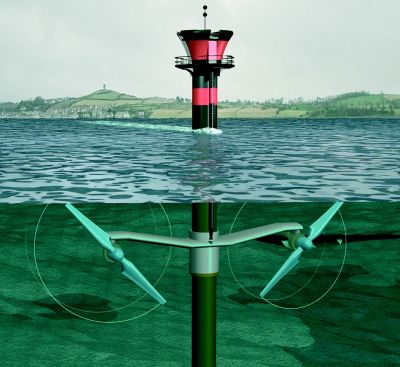NationOfChange March 21 2014
With the potential of limited resources found with fossil fuels, the focus has shifted toward finding alternative energy sources that are renewable and help keep the earth young and healthy. Here are some of the top energy sources that are already here or are being developed.
Tidal Energy
 With a design that’s similar to wind turbines, tidal energy is produced by propellers located under swiftly moving dense water. This source of energy is ideal since tides are more predictable than wind or solar power. Additionally, the technology is a lot older. Tide mills have been used since the Roman Empire.
With a design that’s similar to wind turbines, tidal energy is produced by propellers located under swiftly moving dense water. This source of energy is ideal since tides are more predictable than wind or solar power. Additionally, the technology is a lot older. Tide mills have been used since the Roman Empire.
Tidal energy has many advantages. Tidal turbines are located under the ocean, so people can’t complain about noise or that they’re ugly, as many do with wind turbines. Tidal turbines are also much smaller than wind turbines because water is about 830 times denser than air. Plus, efficiency is at 80 percent, which is higher than other forms of energy including coal, wind, and sun.
Solar Power
Solar power is one of the most common sources of renewable energy. The sun is captured using photovoltaic cells (also called solar panels) and places them in locations that can easily capture sunlight, such as roof tops. According to the U.S. Energy Information Administration, if 4 percent of the world’s deserts were covered with photovoltaic cells, it would produce as much energy as is needed by the entire world.
 Joseph P Farrell – This is an important story, one which bears close watching in my opinion. It was spotted and shared by V.T., a frequent contributor of “bloggable articles” here, and it concerns the plans of a geothermal energy company to use a new technology to burrow farther into the Earth than ever before:
Joseph P Farrell – This is an important story, one which bears close watching in my opinion. It was spotted and shared by V.T., a frequent contributor of “bloggable articles” here, and it concerns the plans of a geothermal energy company to use a new technology to burrow farther into the Earth than ever before:
 With a design that’s similar to wind turbines, tidal energy is produced by propellers located under swiftly moving dense water. This source of energy is ideal since tides are more predictable than wind or solar power. Additionally, the technology is a lot older. Tide mills have been used since the Roman Empire.
With a design that’s similar to wind turbines, tidal energy is produced by propellers located under swiftly moving dense water. This source of energy is ideal since tides are more predictable than wind or solar power. Additionally, the technology is a lot older. Tide mills have been used since the Roman Empire.